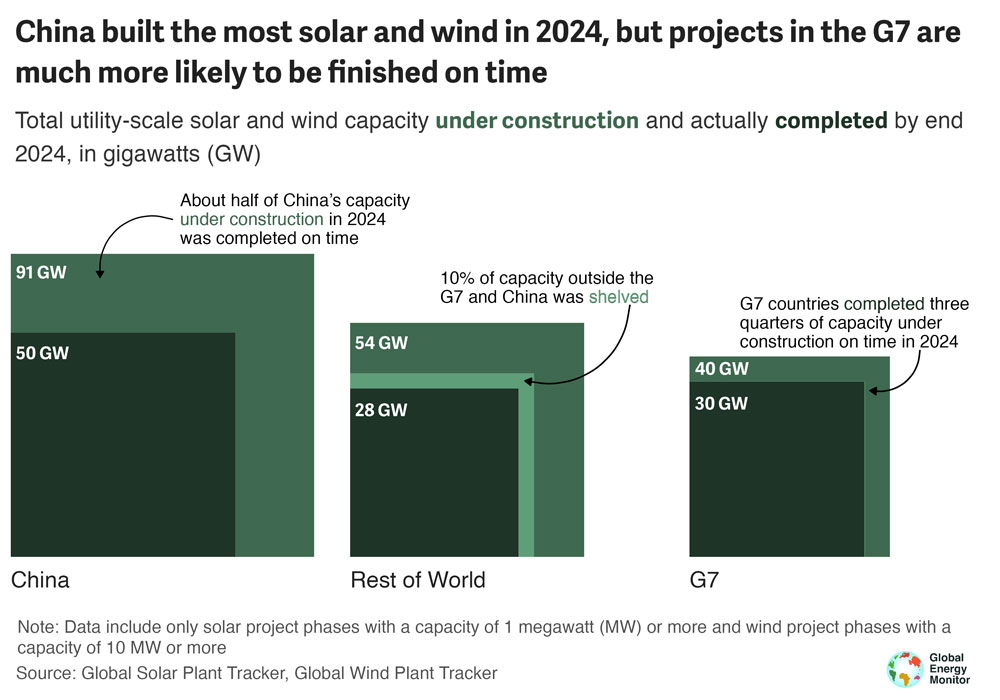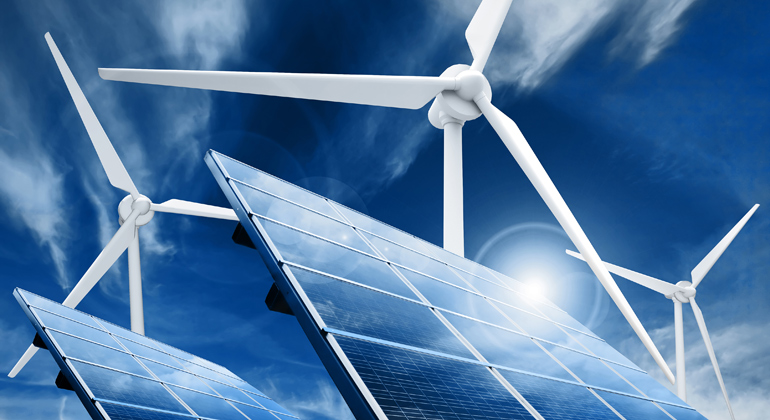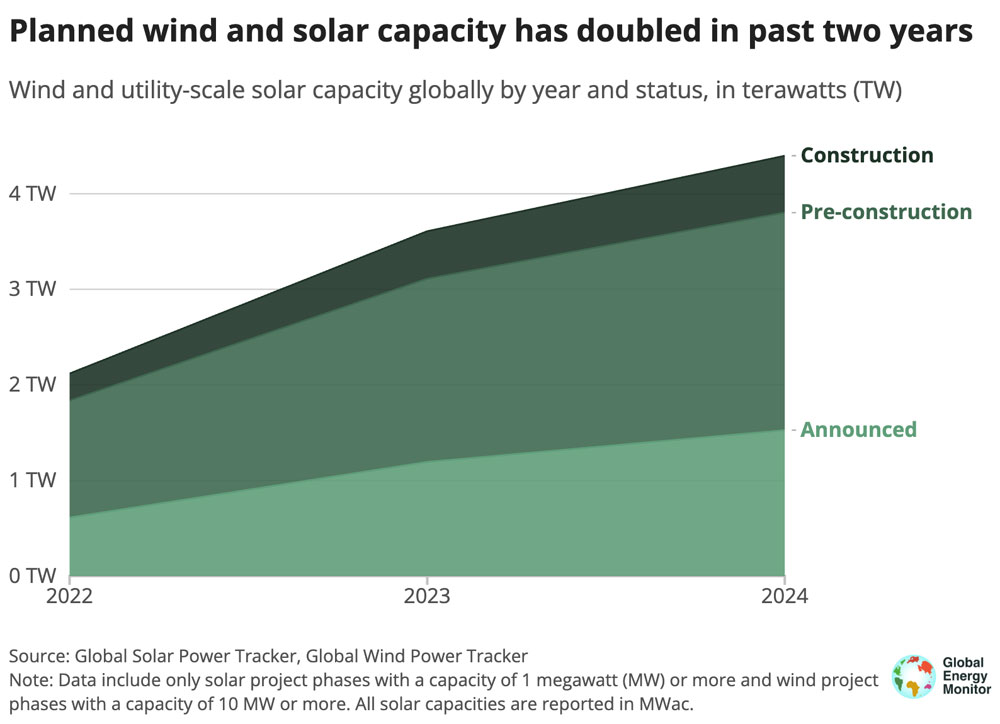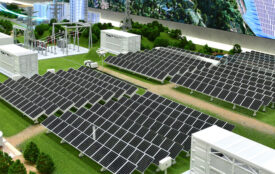Global wind and solar power supply continued to grow in 2024Wind and solar year in review 2024
But: Only 10 per cent of projects in the G7 countries, although they have almost 50 per cent of the wealth!
The key findings of the Global Energy Monitor 2024:
- Utility-scale solar and wind power capacity is expected to increase by over 20% from 3.6 terawatts (TW) to 4.4 TW in 2024, which is roughly equivalent to the additional electricity generation of 400 large coal-fired power plants.
- But only 10 per cent of these projects are being implemented by the Group of Seven (G7), even though these rich countries own almost half of the world’s wealth.
The number of future large-scale solar and wind power plants rose by a fifth last year. However, the world’s richest countries account for only a fraction of the new builds, according to a new report from the Global Energy Monitor (GEM).
The report covers all projects that have been announced, are in the pre-construction phase or are currently under construction with a solar capacity of over 1 megawatt (MW) or a utility-scale wind capacity of over 10 MW.
In 2024, expected utility-scale solar and wind power capacity will increase to 4.4 TW. The projected development of solar and utility-scale wind power is broadly similar at 2 TW and 2.5 TW, respectively.
China has the largest potential supply-scale capacity for both solar and wind energy, at over 1.3 TW – over a quarter of the total global capacity – followed by Brazil (417 gigawatts (GW)), Australia (372 GW), the US (218 GW) and Spain (144 GW).
India plans to add nearly 130 GW of utility-scale solar and wind power capacity in the coming years, and 35 GW of that capacity will be connected to the grid by March 2025. Last year, India’s projected utility-scale solar and wind power capacity increased by 50%, indicating a turnaround in the planning of renewable energy projects.
Yet the G7 countries, which account for 45 per cent of global gross domestic product, are currently only building 59 GW of utility-scale solar and wind power plants. This figure is dwarfed by China, which accounts for more than 70 per cent of current global utility-scale solar and wind power plants, or over 416 GW.
Outside of China, utility-scale solar and wind construction remains low, with only 7% of planned capacity (226 GW) currently being built. Failure to bring renewable projects online could jeopardise the pace and scale needed to meet the COP28 target of tripling renewable energy capacity by 2030.
The GEM data included 185 GW of solar and wind farms under construction in December 2023 and scheduled to come online before the end of 2024. Globally, only 59% of these projects began generating electricity on time.
Despite their smaller share of total capacity, the G7 countries are more likely than China and the rest of the world to complete projects on time. About 76 per cent of solar and wind power projects in the G7 countries were commissioned within the originally planned time frame. In China, this figure drops to 55 per cent, and in other non-G7 countries it drops further to 52 per cent.
Diren Kocakuşak, research analyst at the Global Energy Monitor, says: ‘Last year’s growth in wind and solar power is promising, but the world needs to pick up the pace and get these projects online much faster. If we overcome obstacles such as physical grid constraints, permitting bottlenecks and a lack of financing, we can get closer to tripling renewable energy capacity and limiting the worst effects of climate change.”

Quelle
Global Energy Monitor 2025 / oekonews.at 2025 | Translated with www.DeepL.com/Translator









